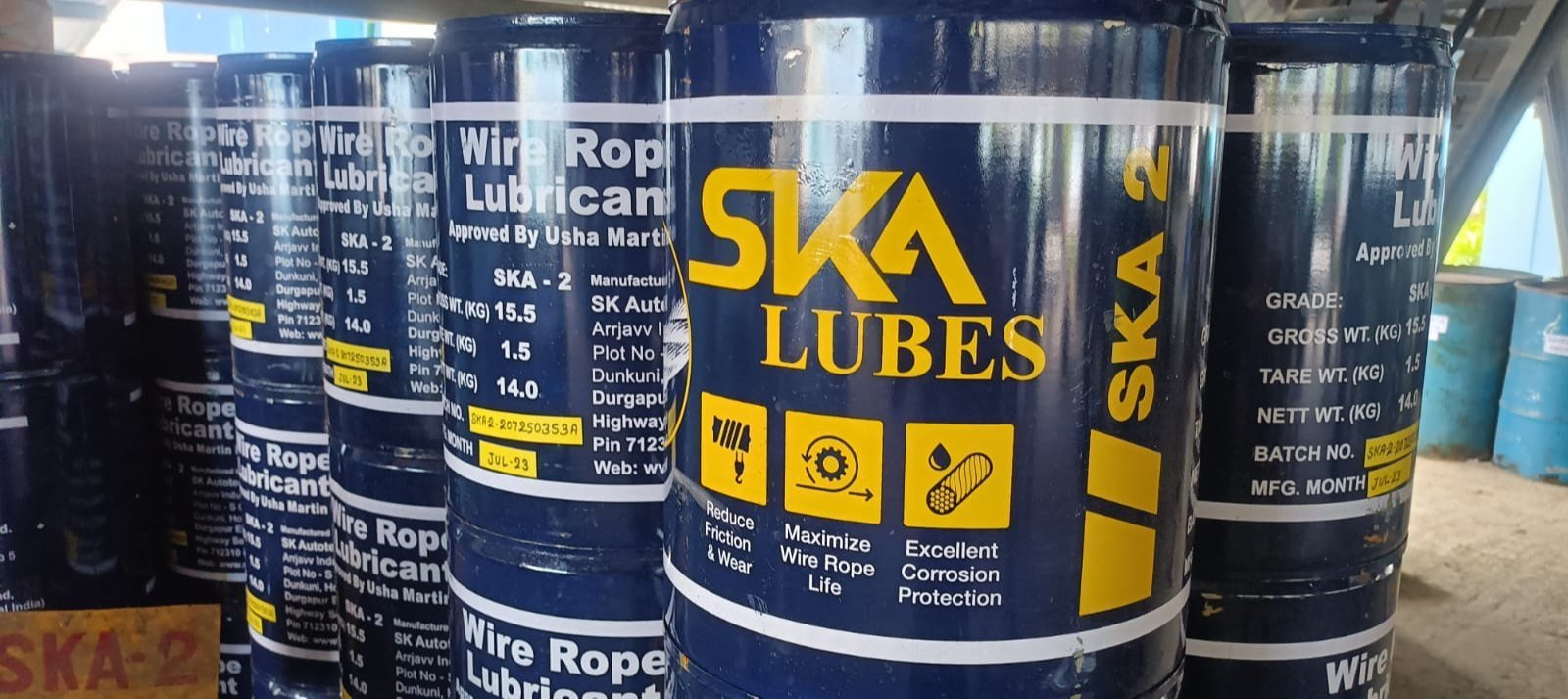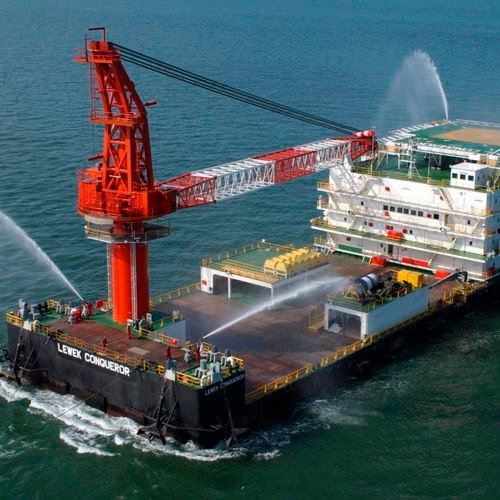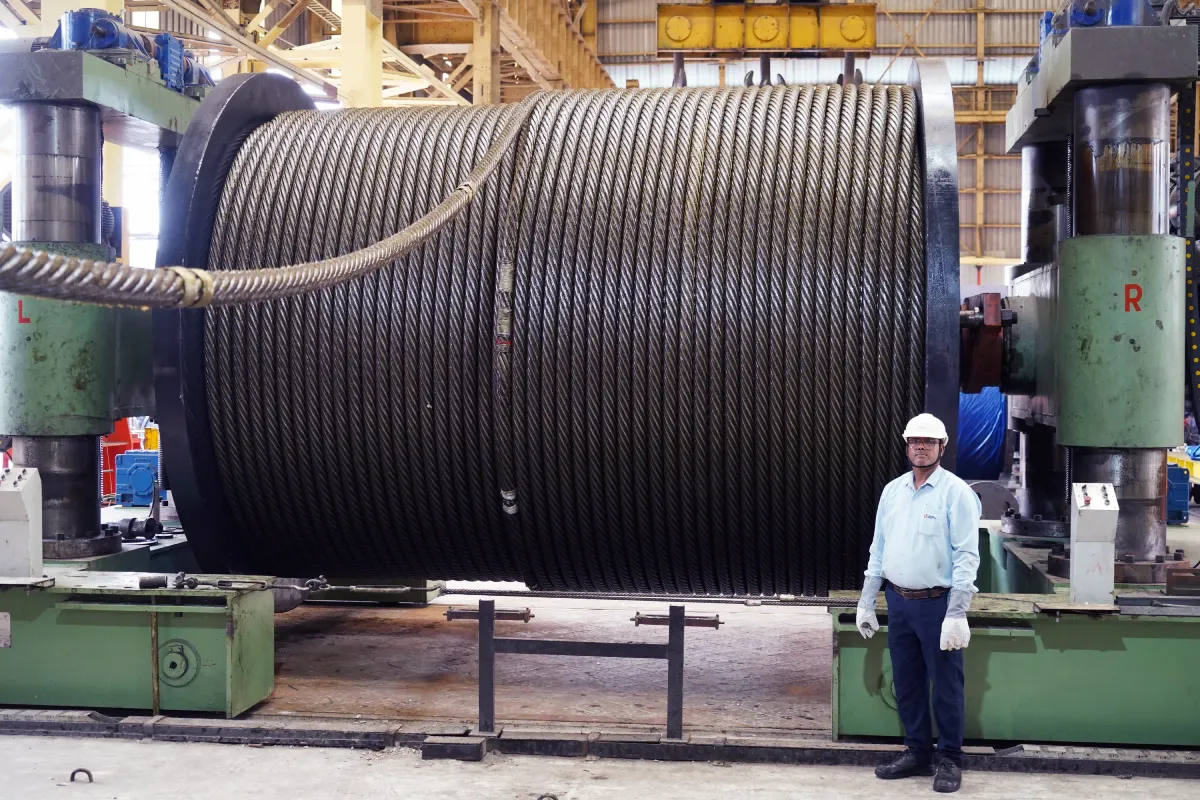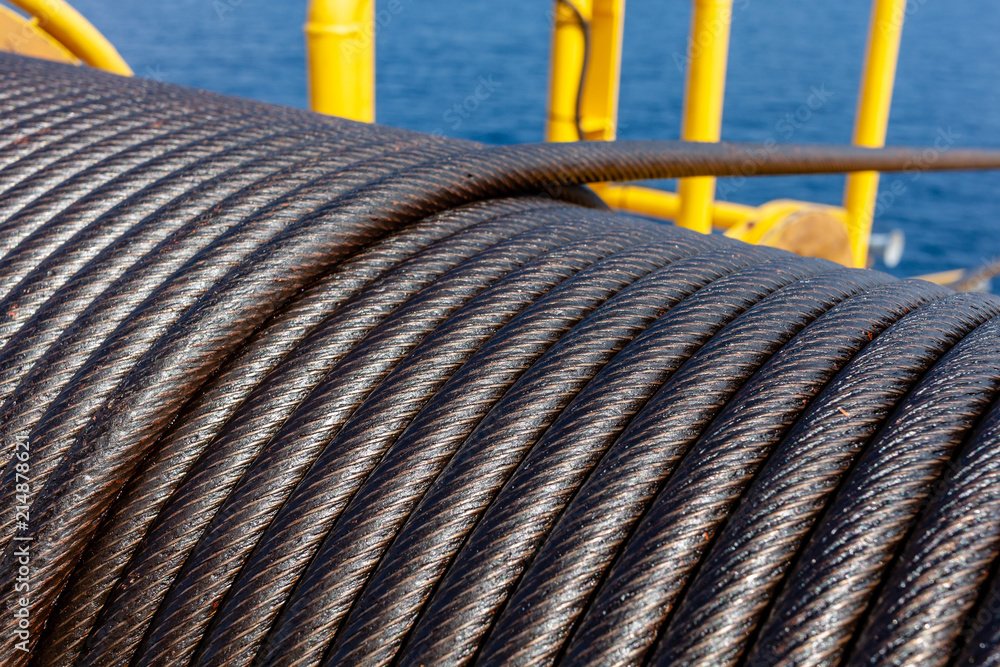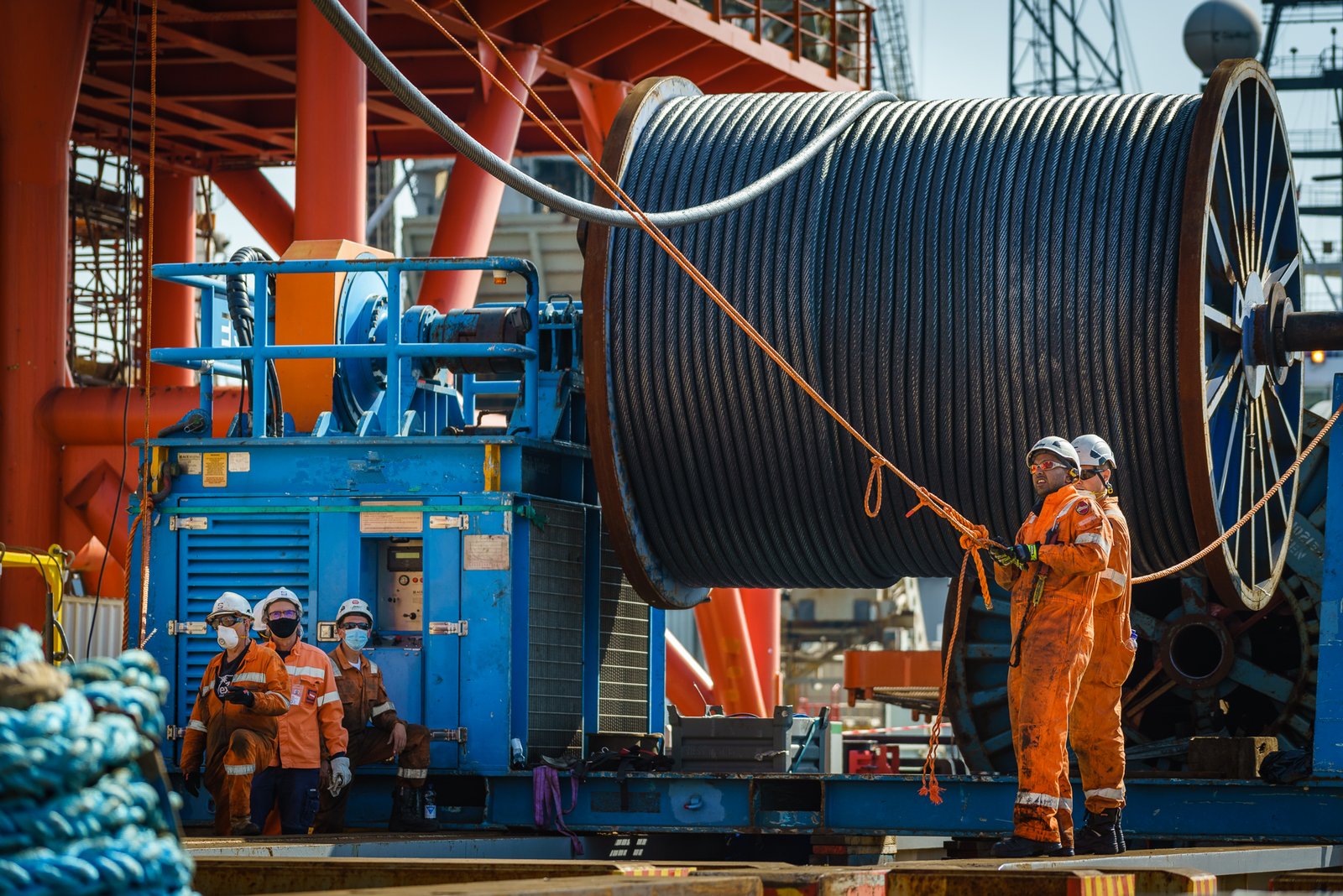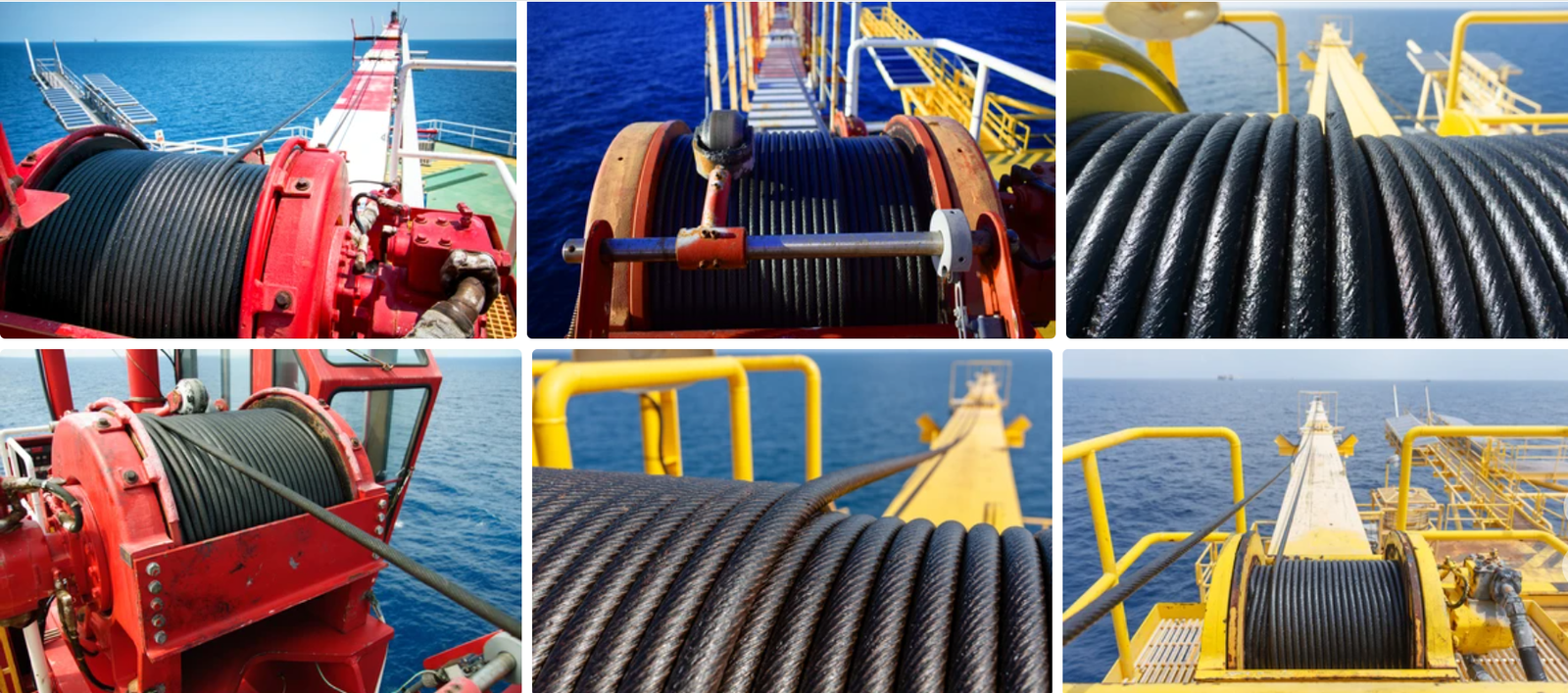Your crane wire rope faces immense stress. Without proper care, it can fail catastrophically. This causes dangerous safety hazards and costly downtime. The right lubricant is its best defense.
The best lubricant for a crane wire rope is a penetrating type that can reach the core. It must also provide a durable outer coating to protect against corrosion and wear, while resisting being washed off by rain.
I remember a client who thought lubrication was an unnecessary expense. A few months later, they called me about a rope failure during a critical lift. That one incident cost them ten times what a proper lubrication program would have.
Why Is Lubricating a Crane Wire Rope So Crucial?
You might think a steel rope is indestructible. But tiny hidden enemies are working against it every day. Lubrication is the essential shield that protects your investment and your team.
Lubrication is crucial because it fights two main enemies: internal friction and external corrosion. It stops the individual wires from grinding against each other and prevents rust from weakening the steel, greatly extending the rope’s safe working life.
The Unseen Battles Inside Your Rope
A wire rope is a complex machine with many moving parts. Every time it bends over a sheave or drum, its individual wires and strands slide against one another. Without lubrication, this movement creates enormous friction.
The Battle Against Friction
Friction is a silent killer of wire ropes. It occurs in two places.
- Internal Friction: This happens between the individual wires and strands inside the rope. As the rope works, these components rub together. Without a lubricant film, this rubbing is like sandpaper, causing wear and creating fine, abrasive metal dust. This leads to internal wire breaks, which are hidden from view and extremely dangerous. I think of it like the joints in a human body. Without cartilage, the bones grind together. Lubricant is the rope’s cartilage.
- External Friction: This happens where the rope contacts sheaves and drums. The lubricant provides a slick surface that reduces wear on both the rope and the equipment itself. This can save you a lot of money on replacing expensive sheaves.
The Shield Against Corrosion
The second major enemy is corrosion, or rust. Moisture is everywhere, from rain to humidity. It can easily get trapped between the rope’s strands.
Once inside, moisture attacks the steel, causing corrosion. Rusted wires lose their strength and elasticity. A corroded rope is a weak rope. A good lubricant does two things to fight this.
- It creates a barrier. The lubricant coats the outer surface, preventing moisture from getting in.
- It displaces moisture. Penetrating lubricants push existing moisture out from the rope’s core.
The working environment plays a huge role here. A rope used on a dock will face saltwater spray, which is extremely corrosive. A rope in a chemical plant might be exposed to acidic fumes. In my experience, proper lubrication can make a massive difference in lifespan.
Table: Estimated Rope Lifespan with and without Lubrication
| Environment | Condition | Estimated Lifespan |
|---|---|---|
| Dry, Indoor | Unlubricated | 100% (Baseline) |
| Dry, Indoor | Properly Lubricated | 150%-200% |
| Humid, Outdoor | Unlubricated | 40%-60% of Baseline |
| Humid, Outdoor | Properly Lubricated | 100%-120% |
| Marine/Saltwater | Unlubricated | 15%-25% of Baseline |
| Marine/Saltwater | Properly Lubricated | 70%-90% |
Note: These are estimates. Actual lifespan depends on usage, inspection, and rope quality.
Maintaining Structural Integrity
A well-lubricated rope works better. The lubricant helps all the strands and wires move correctly, allowing the rope to distribute the load evenly. It helps the rope maintain its designed shape and flexibility. A dry, stiff rope will not spool correctly on a drum and will wear out much faster.
How Do You Choose the Best Lubricant?
Walking into a store, you see dozens of lubricant options. You see oils and greases of all kinds. How do you pick the one that will protect your rope, not harm it?
The best choice is a lubricant designed specifically for wire rope. It must be a penetrating type to reach the core. It must also be adhesive enough to stick to the outside and should resist being washed away by rain or water.
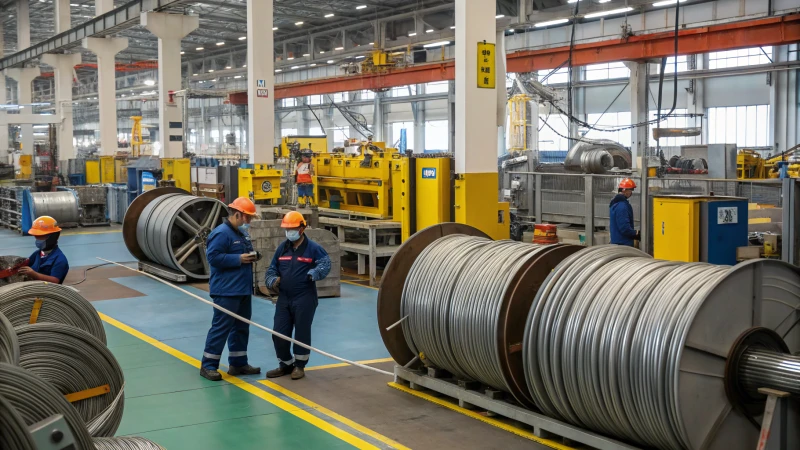
Dive Deeper: Picking the Right Product for the Job
Not all lubricants are created equal. Using the wrong one can be almost as bad as using nothing at all. I’ve seen ropes gummed up with thick grease that actually trapped moisture and dirt, accelerating corrosion.
Penetrating vs. Coating Lubricants
There are two main types of wire rope lubricants.
- Penetrating Lubricants: These are typically less viscous, meaning they are thinner. Their main job is to flow into the spaces between the strands and wires to lubricate the core of the rope. This is where most friction and internal corrosion begins, so this is a critical function.
- Coating Lubricants: These are thicker and more adhesive. Their job is to form a protective layer on the outside of the rope. This layer acts as a shield against moisture, dirt, and abrasion. It is also the first line of defense against wear from sheaves and drums.
The best products are often a hybrid. They are thin enough to penetrate when applied, but then the solvent carrier evaporates, leaving behind a more robust, protective film.
Key Lubricant Properties to Look For
When I help my clients choose a lubricant from our Aulone product line or from another supplier, I tell them to look for these features on the technical data sheet.
Table: Essential Lubricant Characteristics
| Property | Why It Matters | What to Look For |
|---|---|---|
| Penetration | The core is the most critical part. If the lubricant doesn’t reach it, the rope will fail from the inside out. | Look for terms like “penetrating” or “core-lubricating.” The viscosity should be low enough to flow. |
| Adhesion | The lubricant must stick to the rope. If it drips off or gets flung off during operation, it isn’t doing its job. | Look for terms like “tacky,” “high-adhesion,” or “no-fling.” |
| Corrosion Inhibition | The lubricant must actively fight rust, not just block water. This is vital in wet or marine environments. | The product description should say it contains “rust inhibitors” or “corrosion protectants.” |
| Temperature Range | A lubricant can become too thin in the heat or too thick in the cold. It must perform in your specific climate. | Check the product’s “service temperature range” on the data sheet. |
| Washout Resistance | Rain and water spray can wash a poor lubricant off the rope in hours, leaving it unprotected. | Look for “water resistant” or “washout resistant” properties. This is critical for outdoor cranes. |
A Special Warning About Grease
It is very tempting to just use a standard bearing grease on a wire rope. It is cheap and readily available. This is almost always a bad idea.
Most greases are too thick. They cannot penetrate to the core of the rope. Instead, they just sit on the surface. This does three bad things:
- It traps moisture: The thick grease can form a seal that traps water inside the rope, accelerating rust.
- It collects dirt: The sticky surface acts like a magnet for dust and grit, which then works its way into the rope and acts like sandpaper.
- It hides problems: A thick coating of grease makes proper inspection impossible. You cannot see broken wires or signs of corrosion underneath.
For our Aulone ropes, we always recommend a specialized wire rope lubricant, never a general-purpose grease.
What Is the Correct Procedure for Lubricating a Crane Wire Rope?
Applying lubricant seems easy. But doing it wrong is almost as bad as not doing it at all. A sloppy job wastes product and does not protect the rope where it matters most.
The correct procedure starts with safely preparing the crane. Next, you must thoroughly clean the rope to remove all old lubricant and debris. Finally, apply the new lubricant using a method that ensures complete coverage, especially at the core.
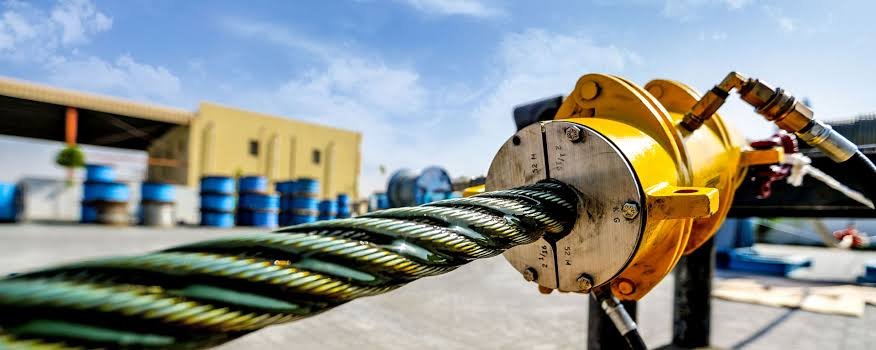
Dive Deeper: A Step-by-Step Guide to Proper Lubrication
I have seen many methods over the years. Some are simple, some are complex. But the ones that work always follow these fundamental steps.
Step 1: Safety First
Before you even touch the rope, you must ensure the crane is safe.
- Lock-Out/Tag-Out: The crane must be de-energized and locked out according to your site’s safety procedures. This prevents any accidental movement of the rope or machinery while you are working on it.
- Personal Protective Equipment (PPE): At a minimum, you need gloves to protect your hands from the lubricant and from sharp broken wires (jaggers). You also need safety glasses to protect your eyes from splashes or debris.
- Clear the Area: Make sure the work area is clean and free of trip hazards.
Step 2: The Importance of Cleaning
You cannot put new paint on a dirty wall. Likewise, you cannot put new lubricant on a dirty rope. Applying lubricant over old, hardened grease and dirt is useless. The new product will not be able to penetrate to the core.
You must clean the rope first. Here are some common methods:
- Wire Brushing: Manually or with a power tool, a wire brush can remove hardened grease and surface rust.
- Compressed Air: A high-pressure air jet is good for blowing loose dirt and moisture out from between the strands.
- Solvents: Some solvents can dissolve old lubricant, but you must be very careful. Use a non-flammable solvent, ensure good ventilation, and make sure it is compatible with your rope’s core (especially if it has a fiber core). The rope must be completely dry before you apply new lubricant.
Step 3: Application Methods
This is where the new lubricant goes on. The goal is to get full coverage, inside and out. Different methods work for different situations.
Table: Comparison of Lubrication Application Methods
| Method | How It Works | Pros | Cons |
|---|---|---|---|
| Manual (Brush/Rag) | A person paints or wipes lubricant onto the rope. | Simple, no special equipment. | Slow, messy, inconsistent. Poor penetration. |
| Drip/Bath System | The rope passes through an oil bath or under a drip applicator. | Consistent external coating. | Can be wasteful, messy. Limited penetration. |
| Aerosol Spray | Lubricant is applied from a spray can. | Easy for spot treatments. | Expensive for long ropes. Penetration can be poor. |
| High-Pressure Lubricator | A special collar is clamped around the rope. Lubricant is forced under high pressure into the rope core. | Best penetration. Fast and efficient. Cleans and lubricates at the same time. | High initial cost. Requires training to use correctly. |
For the high-value crane ropes we produce at Aulone, I always advise customers to invest in a high-pressure lubricator. The deep penetration it provides is the best way to maximize the life of an expensive rope.
Step 4: Final Touches
After the lubricant is applied, let the rope sit for a short time to allow for penetration. Then, it’s a good practice to run the rope through its normal work cycle a few times (under light load) to help distribute the lubricant evenly. Finally, wipe off any thick excess from the surface. This prevents it from flinging off and making a mess.
How Often Should You Lubricate Your Crane Wire Rope?
Is lubrication a yearly task? Is it a monthly one? The answer is not the same for everyone. It depends heavily on where and how you use your crane.
The frequency of lubrication depends on the manufacturer’s recommendation, your operating environment, and how much you use the rope. A rope in a harsh, wet environment needs lubrication far more often than a rope used intermittently indoors.

Dive Deeper: Creating a Lubrication Schedule
A “set it and forget it” approach does not work for wire rope maintenance. You need a schedule that is based on the real-world conditions your rope faces.
Start with the Manufacturer’s Guide
Your first resource should always be the manuals for the crane and the wire rope. Companies like us, Aulone, provide guidelines for our products. These recommendations are based on extensive testing and are the best starting point for creating your schedule. They will often give you a baseline, such as “every 200 hours of operation” or “every 3 months.”
Factors That Increase Lubrication Frequency
You should take the manufacturer’s baseline and adjust it based on your specific situation. You will need to lubricate more often if your rope is exposed to any of the following:
- Harsh Environments: This is the biggest factor.
- Marine or Saltwater Air: Lubricate frequently, perhaps monthly.
- High Humidity or Rain: Water will try to wash the lubricant away.
- Dusty or Dirty Conditions (Mines, Construction Sites): Dirt mixes with lubricant to create an abrasive paste.
- Chemical Fumes: Industrial environments can be corrosive.
- High Usage: A crane that operates for three shifts, seven days a week will need more frequent lubrication than a crane used only a few hours a week. More bends over sheaves means more internal friction.
- Extreme Temperatures: Very hot weather can cause lubricant to thin out and drip off. Very cold weather can cause it to harden and lose its effectiveness.
- Age of the Rope: As a rope gets older, its original factory lubrication will be depleted. It will rely more heavily on your field lubrication.
The Role of Regular Inspection
The best way to know when to lubricate is to inspect the rope regularly. This should be part of the crane operator’s daily check.
- Look: Does the surface of the rope look dry? Do you see any signs of rust on the surface or coming from the inside (this looks like a reddish-brown powder in the valleys between strands)?
- Touch: Wear gloves. Can you feel a film of lubricant on the rope’s surface? Try to open the strands slightly in a slack part of the rope. Do the inner wires look oily or are they dry and rusty?
If the rope looks or feels dry, or if you see any corrosion, it is time to lubricate, regardless of what the schedule says. Regular, visual inspection is your best guide.
Conclusion
Proper lubricant is not just a maintenance item. It is a critical safety tool that protects your people, your equipment, and your business’s bottom line.

